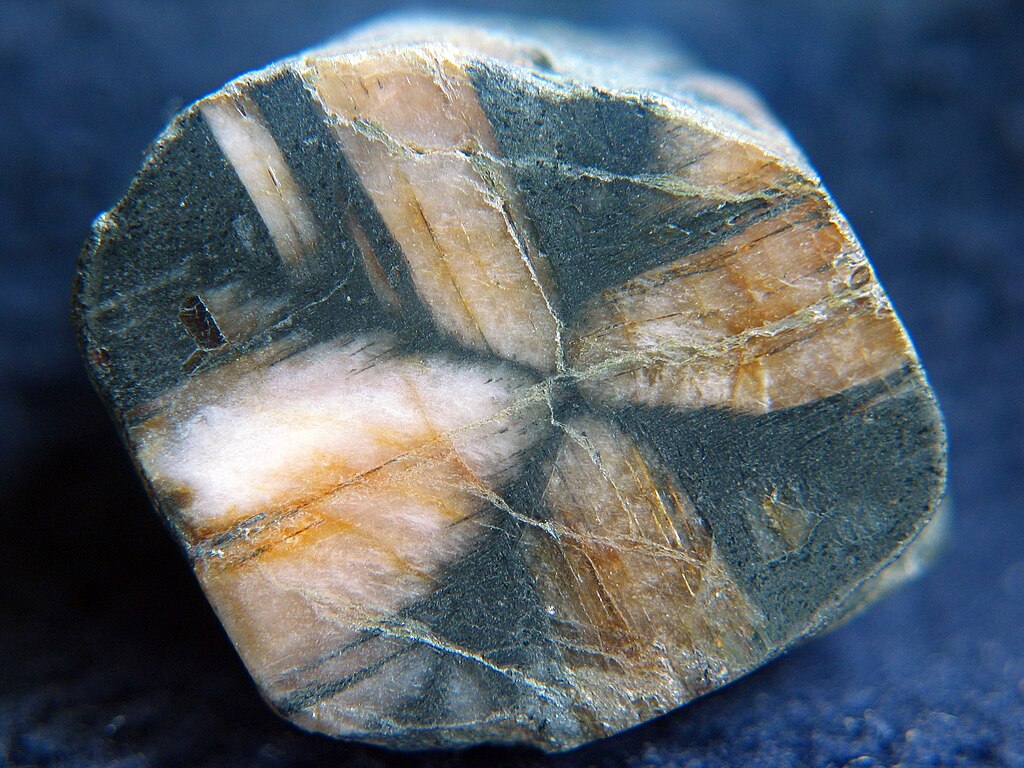Chiastolite (Cross Stone)
This mineral’s name comes from the Greek word for “cross” and is pronounced like “kai-ass-toe-light” with emphasis on…well…the second syllable. Chiastolite is commonly known as “cross stone” because its most common round crystal habit has a cross-shaped pattern when you slice it or look at it from the end. Because of that shape, in the past, people of the Christian religion valued pieces of chiastolite, since a cross shape is very important in Christianity. In fact, as early as the 1500s, Christian pilgrims visiting important religious sites in Spain would keep pieces of chiastolite as souvenirs or protective amulets. Chiastolite is one variety of the mineral andalusite, which provides another connection with Spain, as that’s where andalusite was originally discovered (in or near Andalusia, Spain). The cross-shaped crystals that chiastolite forms aren’t just pure andalusite though; the light part of the cross is andalusite, but the dark part is actually graphite.
| Formula | Group or Type | Shape | Hardness | Specific Gravity | Streak | Luster |
|---|---|---|---|---|---|---|
| Al2SiO5 | — | Orthorhombic | 6.5–7.5 | 3.17 | White | Vitreous |
